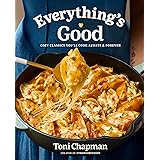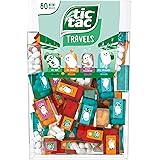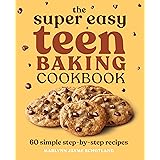Unlocking the Depth of Dark Chocolate Flavor
Achieving a truly remarkable dark chocolate cake begins with the cocoa itself. The video highlights the choice of Dutch processed cocoa, a crucial distinction often overlooked by the casual baker. Dutch processing involves treating cocoa powder with an alkali solution, which neutralizes its natural acidity. This process not only mellows the cocoa’s flavor, making it less bitter and more rounded, but also significantly deepens its color. Think of it like a dark roast coffee versus a light roast; the longer processing yields a richer, darker hue.
In contrast, natural cocoa powder is acidic. It reacts with baking soda to create lift and is brighter in flavor. Dutch processed cocoa, being neutral, primarily relies on baking powder for leavening. This chemical difference is not merely academic; it dictates the final texture and rise of your cake. By selecting Dutch processed cocoa for your ultimate chocolate cake, you are building a canvas for that coveted deep, almost black appearance and a smoother, less sharp chocolate profile that truly sings.
Precision in Preparation: The Baker’s Blueprint
Effective mise en place is the bedrock of successful baking. Rushing the preparatory steps can sabotage even the most promising batter, as leavening agents begin their work the moment wet and dry ingredients combine. The “cool trick” demonstrated in the video for perfectly cutting parchment paper circles is more than just neat; it’s a practical time-saver, preventing the frantic scrambling that often accompanies a quickly setting batter. Picture a ship setting sail with unraised anchors—you wouldn’t begin without proper readiness.
Beyond parchment paper, preparing your tins involves greasing and flouring them thoroughly. This creates a non-stick barrier, allowing your magnificent layers to release cleanly. Sifting dry ingredients—flour, cocoa, baking powder, and potentially baking soda if using a combination of cocoas—is another vital step. This process not only aerates the ingredients, ensuring a lighter crumb, but also eliminates any pesky clumps that could lead to pockets of unincorporated dry mix in your final product. It’s like sifting sand to build a strong foundation; every grain needs to be uniformly distributed for structural integrity.
The Trifecta of Secret Ingredients for the Ultimate Chocolate Cake
The video introduces three surprising yet impactful ingredients: stout, espresso powder, and mayonnaise. These are not merely additions; they are carefully chosen agents, each playing a specific role in elevating the chocolate cake from ordinary to extraordinary.
Stout: Beyond the Pint Glass
Using stout in a chocolate cake might seem unconventional, but it’s a stroke of culinary genius. Stout, particularly a dark, rich variety, contributes a profound malty depth and subtle bitterness that complements and enhances chocolate’s inherent complexity. It acts as a flavor amplifier, much like a bass note in a musical composition, providing a resonant undertone that makes the primary melody (chocolate) stand out even more. Furthermore, the liquid in stout hydrates the cocoa powder effectively, often contributing to a more moist crumb.
Espresso Powder: The Chocolate Catalyst
Espresso powder does not make your cake taste like coffee. Instead, it acts as a silent enhancer, intensifying the chocolate flavor through a phenomenon known as flavor boosting. It’s akin to how salt enhances sweetness; a small amount of coffee amplifies the cocoa notes, making the chocolate taste “more chocolatey.” This effect is particularly potent with dark chocolate, creating a robust and deeply satisfying profile without introducing overt coffee flavors. It acts as a spotlight, drawing all attention to the richness of the chocolate.
Mayonnaise: The Unsung Hero of Moisture
Perhaps the most unexpected secret ingredient is mayonnaise. The immediate reaction might be apprehension, but as the video reassures, you won’t taste it. Mayonnaise is essentially an emulsion of oil, egg yolks, and vinegar (or lemon juice), offering a powerhouse of fat and moisture. Incorporating about a half cup of mayonnaise directly into the batter introduces additional fat, which translates to an incredibly moist and tender crumb. It works like a lubricant in an engine, ensuring smooth operation and preventing dryness. This fat content also helps to create a finely textured cake, resisting staleness for longer. Other fat-rich ingredients like sour cream or yogurt are also employed in similar recipes, but mayonnaise offers a neutral flavor profile, allowing the chocolate to remain the star.
Mastering the Creaming Method
The creaming method, where butter and sugar are beaten together until light and fluffy, is fundamental to many cake recipes, including this ultimate chocolate cake. This process is about more than just combining ingredients; it’s about incorporating air. The sharp edges of sugar crystals cut into the butter, creating tiny air pockets. As the cake bakes, these air pockets expand, contributing to a light and airy texture. Imagine inflating a balloon; the more air you start with, the larger it can become.
Proper creaming requires patience. The video advises doing this “for a while” – typically 5-7 minutes at medium-high speed. The mixture should transform from dense and yellowish to pale, voluminous, and fluffy. Scraping down the bowl frequently ensures all components are evenly aerated. Adding eggs one at a time is equally critical. Butter and sugar, once creamed, have a limited capacity to absorb liquid. Introducing eggs slowly allows the emulsion to remain stable, preventing the batter from curdling or separating. This gradual incorporation maintains the delicate air structure built during creaming, ensuring a consistent and tender cake crumb.
The Art of Assembly and Decoration
Once your chocolate cake layers have cooled, the real fun begins. The video touches on practical decorating tips, starting with lining your workspace with parchment paper. This simple step is an act of foresight, protecting your cake stand or platter from errant icing, much like laying down a tarp before painting. It makes cleanup effortless, allowing you to focus on the artistry of decorating.
The offset spatula, described as a “favorite tool,” is indeed indispensable. Its angled blade allows for smooth, even spreading of frosting, particularly across flat surfaces and around the sides of the cake. It offers superior control compared to a straight spatula, reducing drag and making it easier to achieve a professional finish. As you apply the rich, dark icing mentioned in the video, this tool becomes an extension of your hand, ensuring each layer is generously and evenly coated, culminating in a visually stunning and undeniably delicious ultimate chocolate cake.










